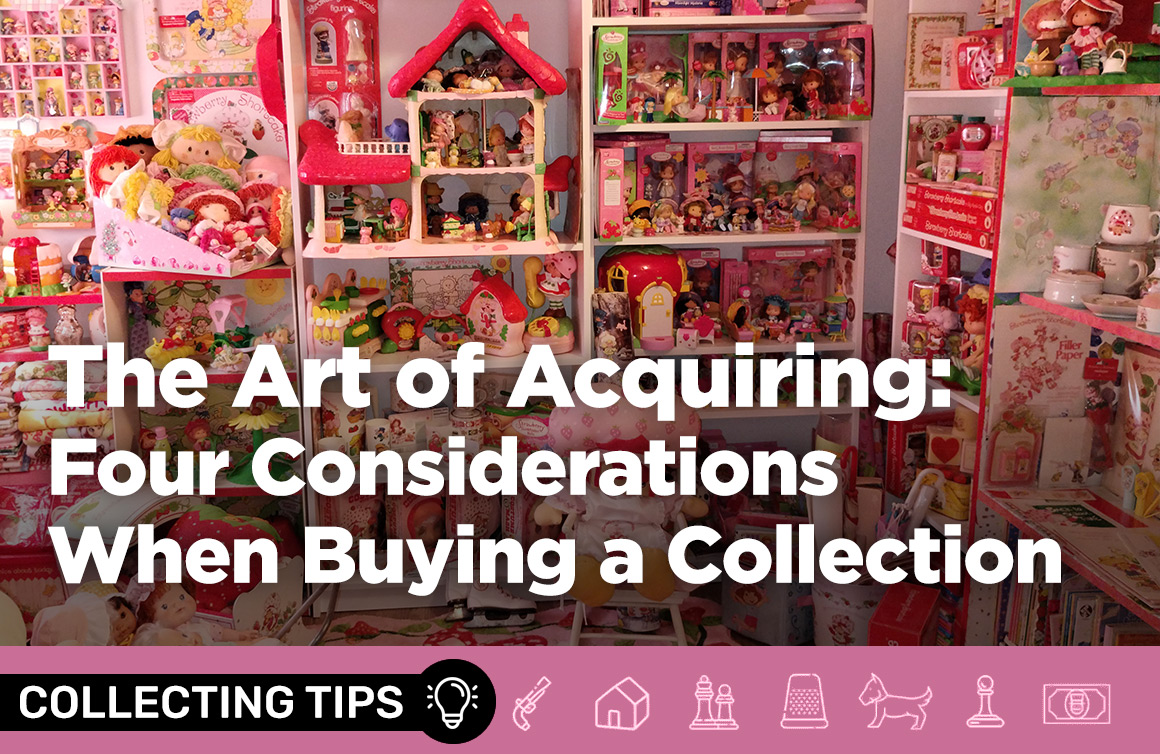I recently found a large collection of Strawberry Shortcake items listed on Facebook Marketplace. As a longtime Strawberry Shortcake collector, I knew I had some of the items, but many were items I had been seeking out for a very long time, and the collection even included some of my holy grail items. As it turned out, the seller had more items than advertised and once she found out how passionate I was about my collection, she was willing to allow me to buy the additional items as well. Over the next few years, I made four or five more purchases from her, until she had sold me everything she had collected over the years.
Collectors divest their collections for different reasons — they might no longer have room in their environment for their once cherished collection or may value the monetary value their objects would bring. Letting a fellow collector know how much objects mean to you — sharing photos of your own displays and sharing stories or memories — can reassure them that their collection is in good hands and encourage them to open more of their collection to you for purchase.
There are many factors to weigh when considering acquiring an established collection. Here are four to keep in mind:
DISCOVERY
Online marketplaces like eBay, Facebook Marketplace, and Craigslist are great places to start. You can also join online and local collectors groups. I also keep my eye on estate and garage sales because they often have someone’s collection that may have passed away, or they are moving and can’t take it with them. Make sure that people know what you collect. Word-of-mouth can be a great way to find items or even whole collections that are available from colleagues or friends-of-friends.
VALUATION
Typically if someone needs to unload a larger collection at once, the price should be under the retail value of the items. If you don’t know the value of all the items, some research should help. At this point, eBay is very widely accepted as the place where most vintage collectible trading is done. Many collectors use eBay’s completed listings to set their prices, even when selling on other online platforms or at in-person shows.
When researching prices, remember that completed listings show what someone has actually paid. An active listing price only reflects what the seller hopes to get for an item, which could be an inflated amount. Also keep in mind that the prices of some collectibles fluctuate over years, or even seasons within the year. For example, if you are purchasing vintage Christmas items, you will likely be able to negotiate a better price in April than you would in December.
BUDGET
This is a different question from the worth of the items. I have a personal budget of no more than $25 for any one item in my collection, but when making a larger purchase or buying several items at once, I would lower that number considerably. Determining your budget before looking at a collection to purchase can help keep you out of financial trouble. It can also help you determine how much you are willing to negotiate to get the items you want.
STREAMLINING
I am personally an avid seller on many online reselling sites so I always have an outlet for any extra items. If you don’t have the time or knowledge to do that, you might want to consider the online or local collectible groups I mentioned earlier. They can be a great resource for purchasing and selling. If you have a way to sell the items you don’t need, you may be able to pay a little more upfront knowing that you could recoup some or even all of what you spent once the items are sold.
If you are looking to expand your collection quickly, purchasing an established collection could be the way to go. Have fun treasure hunting and good luck!

